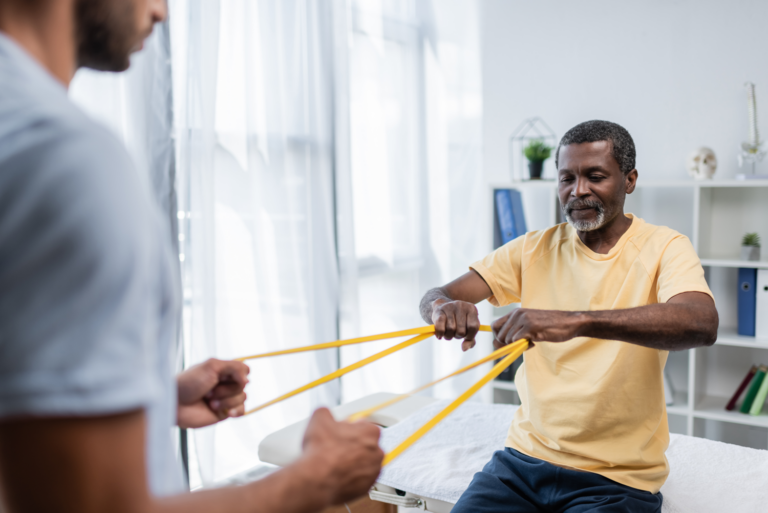
Physical therapy strives to restore function, decrease pain, and increase range of motion by empowering people with individualized attention. It is important for you to effectively communicate with your physical therapist so that they can create a treatment plan tailored specifically for you. Although the official sessions may end, this does not mean the end of getting better. Discontinuing therapy simply means that one must begin working on their own to keep what has been achieved while also continuing to make advancements towards furthering these gains, leading to sustained improvement and an improved level of living.
When should physical therapy be stopped?
Physical therapy should be stopped when you achieve your treatment goals, experience no further progress, or your therapist advises discharge. Continuation without improvement may indicate the need for a reassessment.
It is essential to follow your therapist’s recommendations for continued exercises independent of the therapist in order to maintain the result and not regress. The rate of progress should be periodically evaluated to ensure that treatment remains effective.
Additionally, if you can easily participate in day-to-day activities without supervision, this may also serve as a good indication that you are ready to be discharged. By regularly speaking with your therapist, you’ll be able to make sure that any decision to discharge you from therapy aligns with the goals of your rehabilitation.
How do you know when physical therapy is no longer needed?
You know physical therapy is no longer needed when your symptoms have resolved, daily functions are restored, and goals are met. If therapy no longer contributes to improvement, it may be time to stop.
Regular reassessments ensure that discharge is indicated only when the person has reached a point of readiness and has begun using self-management strategies on a regular basis. Independence in exercising, and performing daily tasks without pain or restriction, also shows that the therapy has served its purpose. Your therapist’s feedback, combined with your personal confidence in being able to continue making gains, would confirm that, yes, it is appropriate to discontinue therapy.

What happens if you stop physical therapy too early?
Stopping physical therapy too early can lead to incomplete recovery, recurrence of symptoms, or increased risk of re-injury. It may also prolong the healing process.
Compliance to the duration of treatment and completion of the full course is very crucial to get optimum results and prevent setbacks. Premature termination may not resolve deep-rooted problems. This prevents any long-term recovery possibility.
Completion of therapy as prescribed permits the completion of the healing process in muscles, joints, and tissues. This reduces future health risks and provides better prospects for long-term recovery. Compliance with the full program assures continued progress with reduced possibilities of relapse.
Can you resume physical therapy after stopping?
Yes, you can resume physical therapy after stopping, especially if symptoms return or new issues arise. Returning to therapy can address these concerns and restore function.
You need to see your doctor for an examination of your status and then decide what the next step should be. It may be time to reassess as there could have been some changes or other conditions that may have come up.
Picking up again will help reinforce any past gains and assist in areas of your life that may not be improving at a satisfying pace, thus making sure that your health and wellness is covered completely.
What are the signs that physical therapy is effective?
Signs that physical therapy is effective include reduced pain, increased mobility, and improved strength and function. Progress towards goals and better performance in daily activities are also indicators.
Follow-up evaluations and your therapist’s comments guarantee that the therapy is successful and adjustments are being made in the treatment accordingly. Improvement in one’s current physical abilities and increase in confidence while performing goes on to depict successful treatment. Successful therapy is usually associated with a reduction in dependence on drugs and an overall improvement in the quality of life, thus confirming the role of therapy in recovery.

How long does a typical physical therapy program last?
A typical physical therapy program lasts 6-8 weeks, but the duration varies based on individual needs and conditions. Factors like injury severity, treatment goals, and progress impact length.
Individual programs allow for optimum time in recovery, the length of which may be prolonged or shortened as necessary to optimize therapeutic results. Some conditions require even shorter or longer lengths of time to produce optimum results.
The constant contact with your therapist continually evaluates your progress and modifies the program to address the changing needs of the client, allowing for total care and successful rehabilitation.
What should you do after completing physical therapy?
After completing physical therapy, continue prescribed exercises and maintain an active lifestyle to preserve gains. Regular follow-ups and self-monitoring help prevent recurrence.
It is also a way of maintaining long-term recovery and health by keeping oneself updated about body mechanics and introducing wellness practices into the routine. Embracing healthy practices such as stretching exercises, strength training, and aerobic exercises enhances the skills learned in therapy. Engaging in community activities or wellness programs can further enhance one’s current physical and mental health and promote further recovery and prevention of further complications.
Successfully Concluding Physical Therapy
Knowing when to end physical therapy is based on recognizing certain indicators such as meeting your objectives, lesser pain, and being able to do exercises on your own. Talking with the therapist helps one make such a determination. The closure of treatment shows that you have worked tirelessly and consistently towards it. This also indicates that one can now take care of themselves health-wise which allows them to sustain and improve upon what they have achieved so far to be healthier in days ahead.
